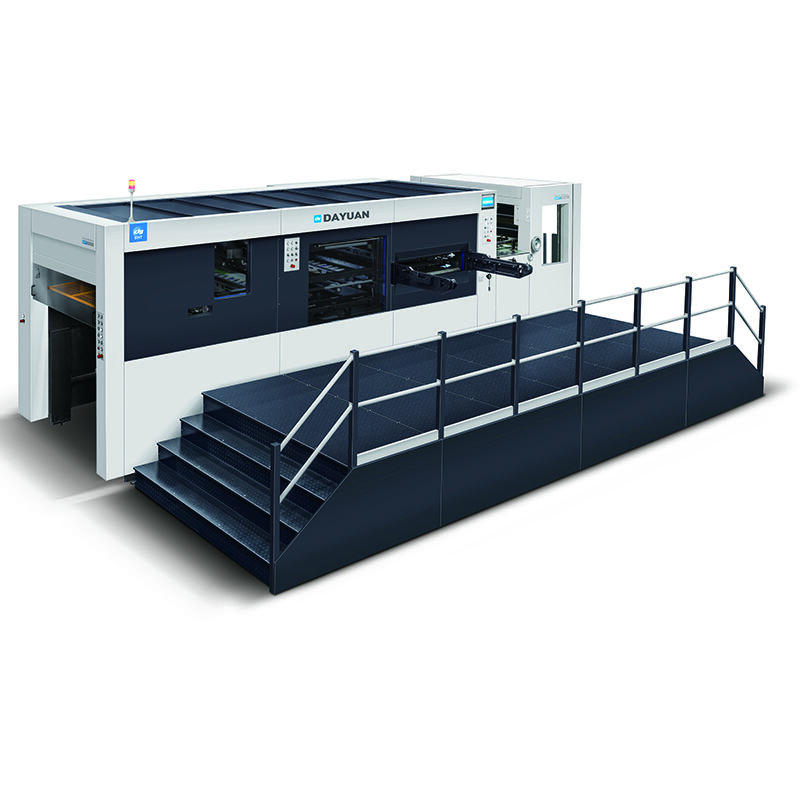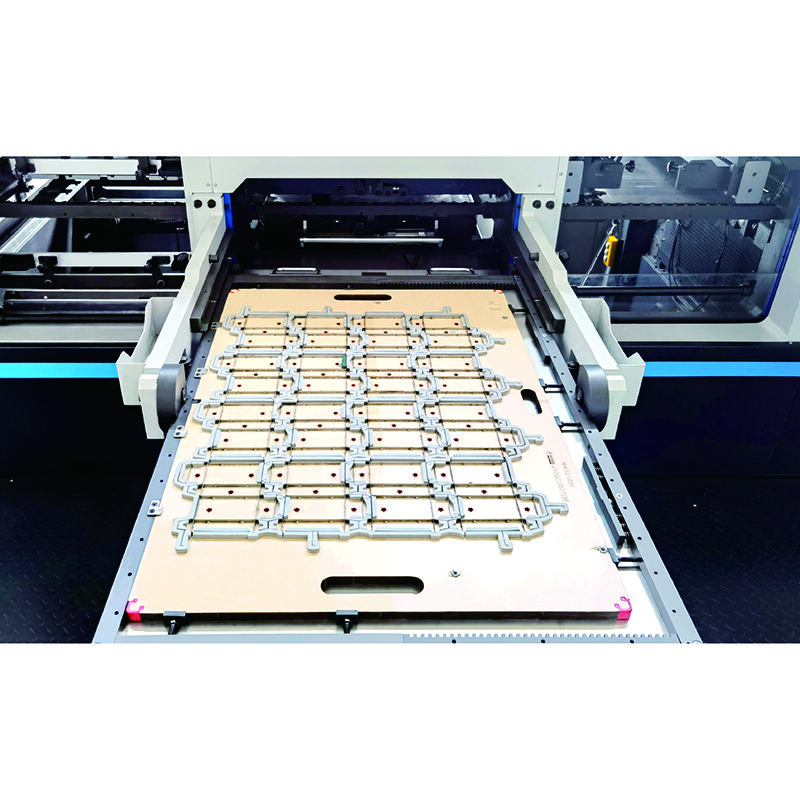How to Choose the Right Die Cutter for Your Packaging Needs
In the packaging industry, precision, speed, and efficiency are crucial for staying competitive. A Die Cutter is an essential tool for creating packaging components such as boxes, labels, inserts, and custom designs with exact shapes and dimensions. Choosing the right Die Cutter is not just about buying a machine — it’s about ensuring that your production process remains cost-effective, high-quality, and capable of meeting customer demands.
This comprehensive guide will walk you through the factors to consider when selecting the ideal Die Cutter for your packaging needs, covering machine types, performance specifications, production requirements, and budget considerations.
Understanding the Role of a Die Cutter in Packaging
A Die Cutter uses a cutting die to stamp out specific shapes from materials such as paperboard, corrugated cardboard, plastic sheets, or specialty substrates. It ensures that each piece is uniform in size and shape, which is essential for both aesthetics and functionality in packaging.
Packaging companies rely on a Die Cutter for:
-
Creating folding carton templates.
-
Producing inserts for product protection.
-
Cutting window openings in boxes.
-
Shaping labels or stickers.
-
Making promotional or decorative elements.
The type of Die Cutter you choose impacts your production speed, flexibility, and overall cost efficiency.
Types of Die Cutters
Flatbed Die Cutter
-
Operation: Uses a flat surface and a die that presses down vertically to cut material.
-
Advantages: High precision, good for thicker materials, excellent for short to medium runs.
-
Limitations: Slower than rotary cutters for high-volume jobs.
Rotary Die Cutter
-
Operation: Uses cylindrical dies to cut materials in a continuous motion.
-
Advantages: High-speed production, suitable for large runs, can handle continuous webs of material.
-
Limitations: Less precise for intricate designs compared to flatbed cutters.
Digital Die Cutter
-
Operation: Uses computer-controlled blades or lasers to cut shapes without a physical die.
-
Advantages: No need for die-making, quick changeovers, ideal for short runs and prototyping.
-
Limitations: Slower for mass production, may be limited in material thickness.

Laser Die Cutter
-
Operation: Uses laser beams to cut or engrave materials.
-
Advantages: Extremely precise, no wear on cutting tools, handles complex designs easily.
-
Limitations: High upfront cost, slower for certain materials, potential for heat damage.
Key Factors to Consider When Choosing a Die Cutter
1. Type of Packaging Material
Consider whether your packaging involves paperboard, corrugated cardboard, plastics, or specialty substrates. Different Die Cutter models are optimized for specific material types and thicknesses.
2. Production Volume
-
Low to Medium Runs: A flatbed or digital Die Cutter is more suitable.
-
High-Volume Runs: A rotary Die Cutter offers speed and efficiency for continuous production.
3. Cutting Precision and Complexity
If your packaging designs include intricate patterns or small details, opt for a flatbed or laser Die Cutter for maximum accuracy.
4. Changeover Time
For operations that frequently switch between designs, a digital Die Cutter or a model with quick-change tooling will reduce downtime.
5. Budget and Operating Costs
The purchase price is only part of the investment — also factor in:
-
Tooling costs (dies).
-
Maintenance and repairs.
-
Energy consumption.
-
Labor requirements.
6. Available Space
Some Die Cutter models are compact, while others require significant floor space. Measure your production area before making a choice.
7. Automation Features
Advanced Die Cutters offer features like automatic feeding, stacking, waste removal, and registration control. These can significantly improve productivity and reduce manual labor.
Matching a Die Cutter to Your Packaging Workflow
For Custom Packaging
A digital or laser Die Cutter allows for flexible designs without the need for physical dies, making it ideal for short-run custom orders.
For Standardized Packaging
A rotary or flatbed Die Cutter with preset dies ensures consistency and high output for standard box sizes or inserts.
For Prototyping
Digital Die Cutters shine in prototyping because they allow for quick adjustments and immediate sample creation without die manufacturing delays.
Evaluating Die Cutter Specifications
When comparing models, pay attention to:
-
Maximum Sheet Size or Web Width – Determines the largest material size you can process.
-
Cutting Speed – Affects production output.
-
Cutting Force – Important for thicker or denser materials.
-
Registration Accuracy – Ensures consistent alignment for printed materials.
-
Tool Life and Replacement Costs – Impacts long-term operating expenses.
Maintenance and Operator Training
Even the best Die Cutter needs regular maintenance to perform at its peak. Consider:
-
Availability of spare parts.
-
Ease of die changeovers.
-
Lubrication and cleaning requirements.
-
Manufacturer-provided training for operators.
Safety Considerations
Safety features to look for include:
-
Guarding and interlock systems to protect operators.
-
Emergency stop buttons in accessible locations.
-
Sensors to detect material jams or misfeeds.
Proper operator training is critical to prevent accidents and ensure efficient use of the Die Cutter.
Cost-Benefit Analysis
Before purchasing, calculate the return on investment (ROI) by considering:
-
Increased production capacity.
-
Reduction in waste due to improved accuracy.
-
Savings from faster changeovers and reduced downtime.
-
Potential for attracting new business with enhanced capabilities.
Future-Proofing Your Investment
The packaging industry is constantly evolving. Choosing a Die Cutter with modular upgrades or compatibility with new materials ensures you can adapt to market changes without replacing the entire machine.
Conclusion
Selecting the right Die Cutter for your packaging needs requires careful consideration of your material types, production volume, precision requirements, and budget. A well-chosen machine will improve productivity, enhance quality, and deliver long-term cost savings. By matching the Die Cutter’s capabilities to your workflow and keeping future needs in mind, you can ensure a smart, sustainable investment in your packaging operation.
FAQ
What is the difference between a flatbed and rotary Die Cutter?
A flatbed Die Cutter uses a vertical stamping action for high precision, while a rotary Die Cutter uses continuous cylindrical motion for high-speed production.
Can a digital Die Cutter handle large production runs?
Digital Die Cutters are better suited for short runs, prototypes, and custom designs. For large runs, rotary models are typically more efficient.
How often should a Die Cutter be serviced?
Service frequency depends on usage, but regular maintenance checks every few months are recommended to ensure optimal performance.
Do I need a separate die for each packaging design?
For traditional flatbed and rotary Die Cutters, yes. For digital or laser Die Cutters, physical dies are not required.
What safety features should a Die Cutter have?
Look for guarding, interlock systems, emergency stops, and sensors to prevent accidents and protect operators.
Table of Contents
- How to Choose the Right Die Cutter for Your Packaging Needs
- Understanding the Role of a Die Cutter in Packaging
- Types of Die Cutters
- Key Factors to Consider When Choosing a Die Cutter
- Matching a Die Cutter to Your Packaging Workflow
- Evaluating Die Cutter Specifications
- Maintenance and Operator Training
- Safety Considerations
- Cost-Benefit Analysis
- Future-Proofing Your Investment
- Conclusion
- FAQ

